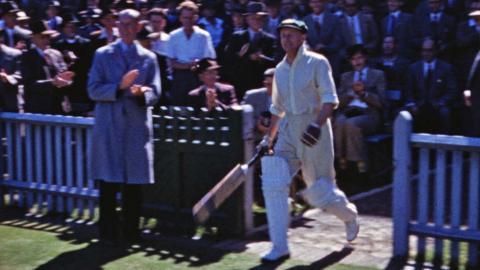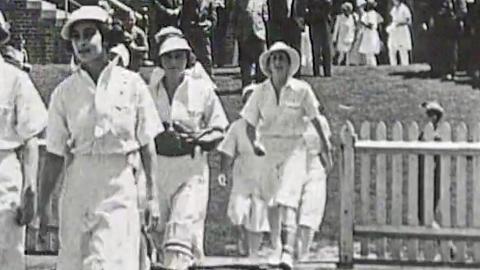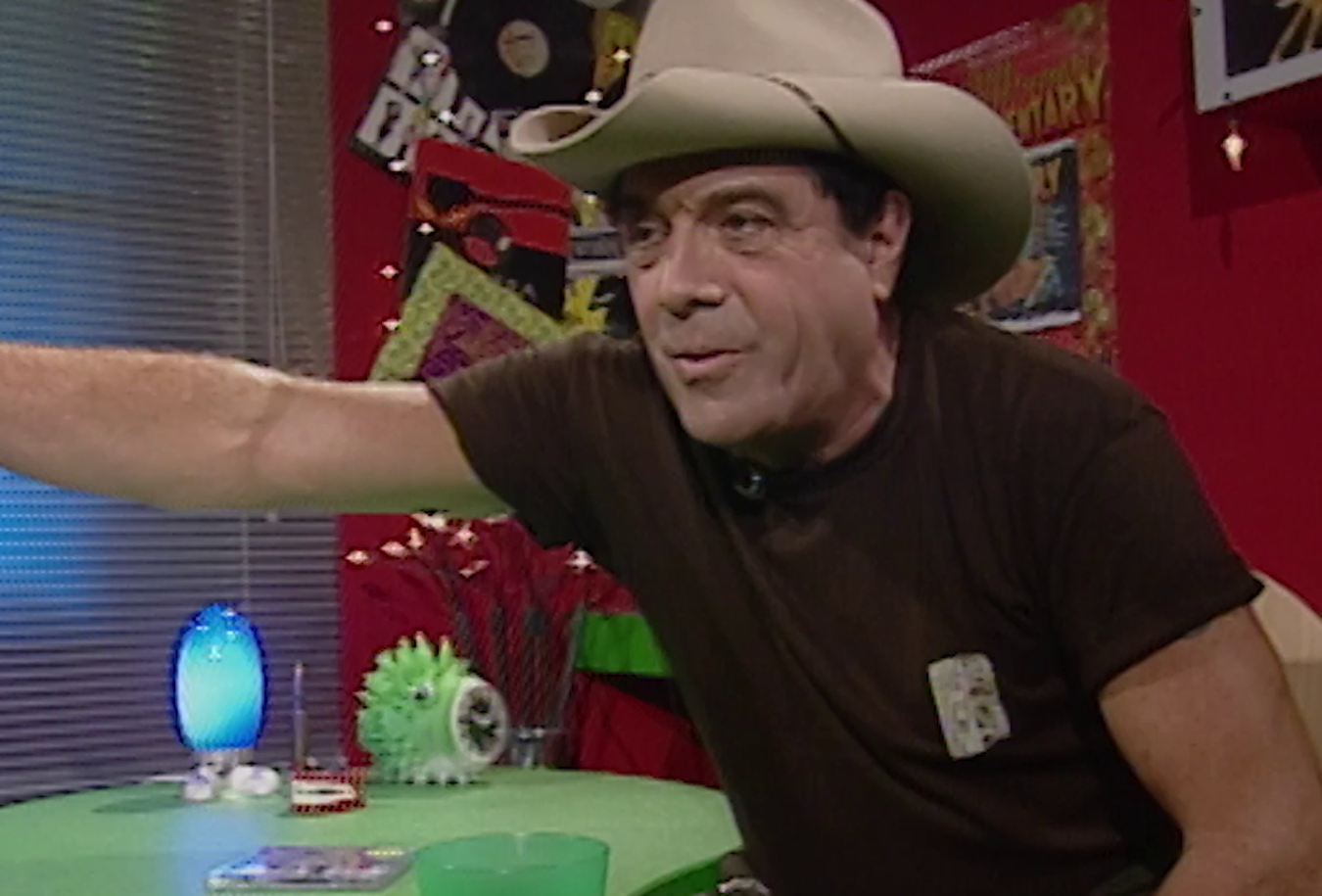
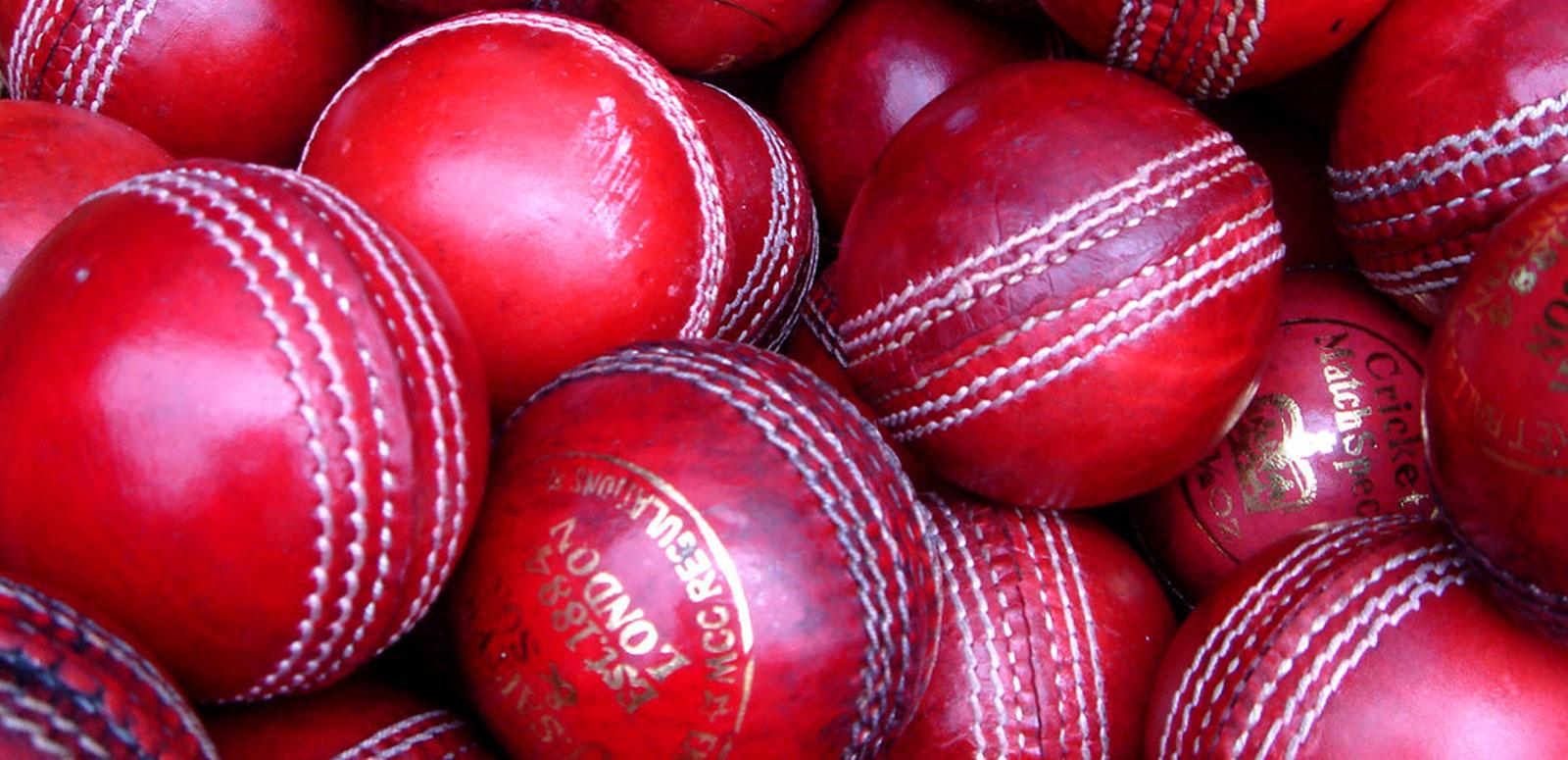
Australian Cricket
Australian Cricket Collection
Cricket is as much a part of the Australian summer as backyard barbecues and sunburn.
The earliest test cricket footage held by the NFSA dates back to 1910. The 'Golden Age of Cricket' is often considered to be before the First World War but it was between the wars that cricket produced the greatest batsman of all time – Donald Bradman, who features in this collection.
You will also discover footage of cricketing legends from the 1950s through to the 80s, including the great Richie Benaud, along with Dennis Lillee, Rod Marsh and the Chappell brothers taking on the mighty 'Windies' in World Series Cricket.
The women's game is also well represented here. You'll discover some rare footage of the pioneering players from the 1930s, Ashes and World Cup teams from the late 1980s, plus the more recent 21st century superstars of women's T20 and One Day cricket.
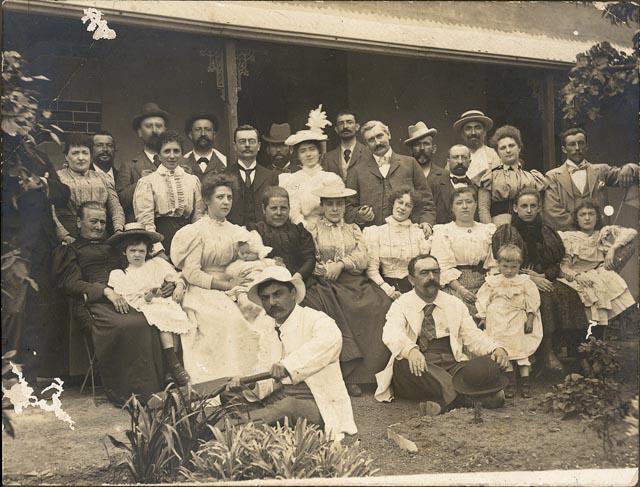
The National Film and Sound Archive of Australia acknowledges Australia’s Aboriginal and Torres Strait Islander peoples as the Traditional Custodians of the land on which we work and live and gives respect to their Elders both past and present.
